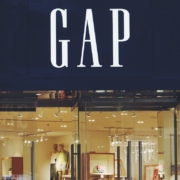LEARN FROM THE MISTAKES OF OTHERS
Almost 30 years ago, Peter Senge, a systems scientist and lecturer at MIT’s business school, developed the concept of the learning organization. This idea became a big wave in organizational development and thinking. Basically, a learning organization is a company that enables the learning of its members while continuously transforming.
According to Mr. Senge and his peers, a learning organization develops because of the pressured business landscape and helps keep businesses competitive. Others, such as Harvard’s business theorist, Chris Argyris, saw learning as being keenly aware of what competitors are doing; recognizing and keeping abreast of changes and innovations in the marketplace; and, then responding with creative solutions.
When people think of learning, they often focus only on learning only from successes. Some marketers call this the “transfer of proven success.” Others refer to it as “copying with pride.” But, it is just as important to learn from mistakes. Learn from your own mistakes and learn from the mistakes of others. Learn from your close competitors’ mistakes.
Last winter, Automotive News, the auto trade press bible, reported that Lincoln would be changing its model names from letters to names. Owners and customers were confused as to which brand was which. Its brands were named MKS, MKZ, MKT, MKC, and so forth. The head of marketing, sales, and service said, “There’s a lot of challenge associated with the letters and putting those together.”
Luxury car brands tend to use letters or alphanumeric combinations. The more mass-market vehicles tend to use names. So, for example, Toyota uses names while Lexus uses alphanumeric branding.
However, it was not just the letter names that put Lincoln in the hot seat. The vehicles were not differentiated enough to make the labels meaningful. Mercedes and BMW have highly differentiated models that are segmented by class (C-class, S- Class) for Mercedes, and series for BMW (3 series, 7 series).
Cadillac introduced a cavalcade of products. They have not learned from the mistakes of Lincoln. Cadillac had a model called ATS (a compact sedan), which was supposed to be the “BMW fighter.” It is being replaced by the CT5. Cadillac’s CTS will also be discontinued and replaced by a midsize sedan also under the CT5 nameplate. There will be the CT4, a small vehicle like a BMW 2 series. A CT6, also a sedan, will be differentiated by GM’s Super Cruise hands-free driving system. There will be the XTS, a large sedan. And, there will be the XT4, a compact cross-over, and a larger model the XT5, as well as a three-row crossover, the XT6. Is all this clear to you? The only named brand is the Escalade, which, by the way, is the only brand that actually makes money for Cadillac.
If you go on the Cadillac website, the coupes and sedans with the alphanumeric names and similar designs are just as confusing as the Lincoln models. The engines differentiate many Cadillac models. But, when parked in a lot, no one sees the engine; people see the vehicles. Striving to be a luxury brand is about more than labels and names. It is about meaningful differentiation. Mercedes, Audi, BMW, Lexus are successful not because of how they label their vehicles but by the relevant, differentiated experiences they promise and deliver.
It remains to be seen if the influx of new Cadillac models will raise the luxury image of the Cadillac brand. Unless the Cadillac models are clearly differentiated, Cadillac may find that the problem Lincoln had was not a Lincoln problem. It was a brand management problem. Learning from someone else’s mistake is far better than making the same mistake on your own.









